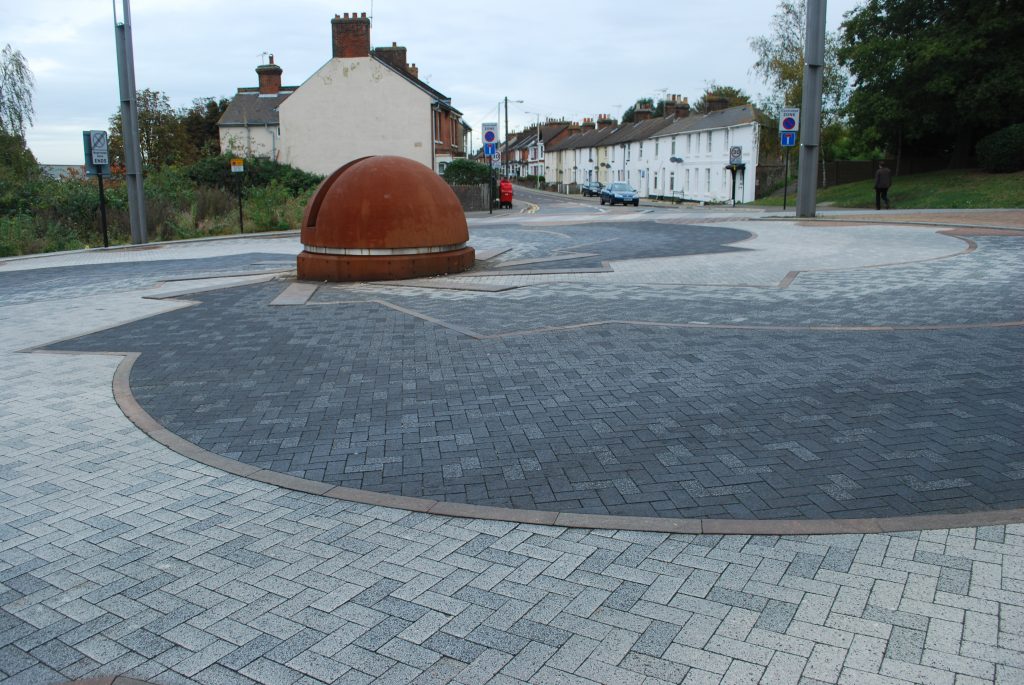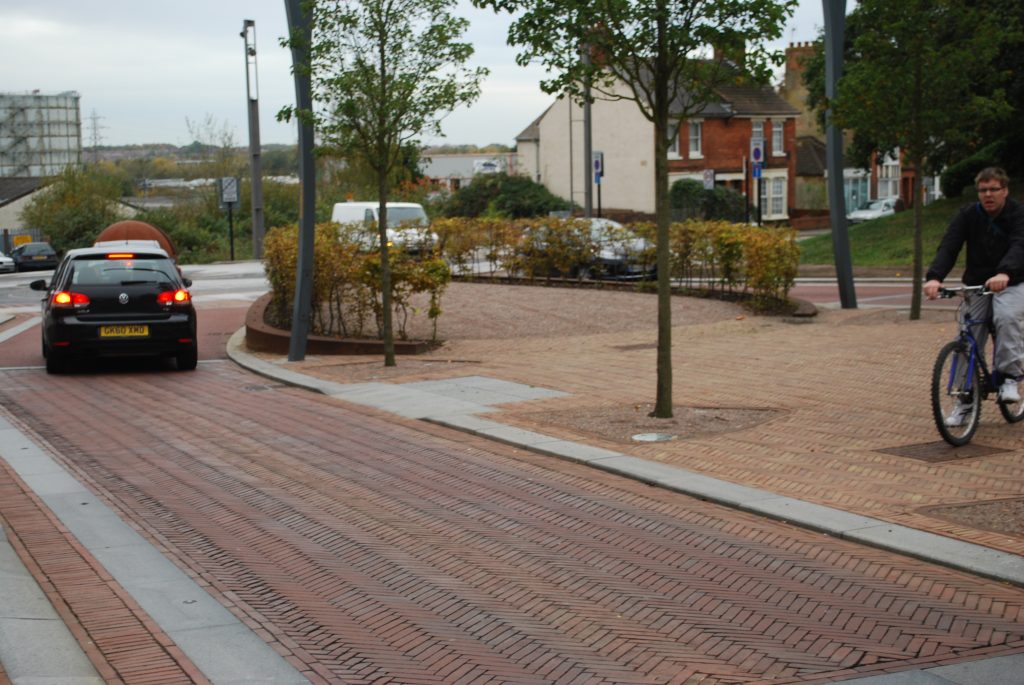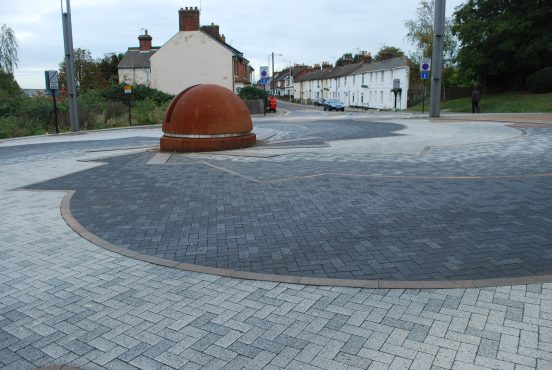Shared surfaces are streets designed to reduce the dominance of motor vehicles by encouraging drivers to be more aware of pedestrians and travel at lower speeds. Often this is achieved through the omission of kerbs which demark the separation between the pedestrian and vehicular routes through a change of level, along with painted lines, railings and signs which also demark routes. The resulting uncertainty in the minds of drivers is said to force them into a heightened level of alertness and into taking more care, chiefly through lowering their speeds. The Department for Transport (DfT) published guidance for the design of shared spaces in 2011 (Local Transport Note 1/11).

Lower speeds are of course good for pedestrians, and can result in interesting spaces with a strong sense of place, but as we have known for some time, the lack of certainty causes problems for some: detectable kerbs, tactile pavement markings and signal-controlled crossings are really important for blind and partially sighted people; the absence of such cues for those with cognitive difficulties (such as dementia) and for young children make the environment difficult to interpret.
Campaigns have gathered force over the past few years, notably the RNIB’s ‘Who put that there!’ campaign, and this has resulted in the Department for Transport’s (DFT) recent moratorium on shared surfaces and the suspension of Local Transport Note 1/11. The moratorium followed the July publication of the DfT’s ‘The Inclusive Transport Strategy: achieving equal access for disabled people’ and involved the DfT writing to Local Highway Authorities (LHA) across England, stating:
‘There are mixed views on the impact of shared space schemes, and many respondents to our consultation on the draft Accessibility Action Plan raised significant concerns about them. In particular, groups representing visually impaired people expressed concern that shared space schemes were difficult to navigate and left them feeling excluded. This particularly applied to schemes that included a ‘level surface’, in which the kerb between the road and the pavement is removed’.
The letter requested that LHAs ‘pause the introduction of new shared space schemes which incorporate a level surface, and which are at the design stage. This pause will allow us to carry out research and produce updated guidance’.
Ambiguity in what comprises a ‘shared surface’ confuses the situation (i.e tabled junctions, homezones) and the ‘pause’ advice has been criticised for being too broad-brush, risking ‘throwing the baby out with the bathwater’ (Source).
Further clarification followed in September 2018 with another ministerial letter to LHAs confirming that the pause applied to schemes with a level surface between the footway and the carriageway, which are ‘at the design stage’ and not to schemes which are ‘currently at the planning stage or beyond’.
The September ministerial letter confirmed that, ‘Creating places that are attractive and work well for everyone should be a central goal of street design’, and clarified that:
‘the focus of the pause is on level-surface schemes in areas with relatively large amounts of pedestrian and vehicular movement, such as high streets and town centres (outside of pedestrian zones). The pause does not apply to streets within new residential areas, or the redesign of existing residential streets with very low levels of traffic, such as appropriately designed mews and cul-de-sacs’.
The letter continues:
‘Features often included in a shared space scheme, such as the minimal use of traffic signs and other traffic management related street furniture, removing traffic signals, removing/modifying formal and informal crossings, raised side road entry treatments, continuous footways, table junctions and shared use routes for pedestrians and cyclists are often integral parts of other traffic management schemes. The use of these features in traffic management schemes is not included in the request to pause level surface shared space schemes. The availability of formal crossings is particularly important for visually impaired people. Local authorities should consider how this need can be met in all schemes, including shared space’.
As designers we have to juggle a myriad of demands, respond to constraints and capitalise on opportunities to try to create useful, beautiful spaces which meet a given brief. Often something which is perfect in one sense causes problems in another sense, and this is the case with shared surfaces. NPPF 2018 (paragraph 110) requires that priority should be given to pedestrian and cycle movement, while addressing the needs of people with disabilities and reduced mobility, and that in doing so we need to ‘create places that are safe, secure and attractive – which minimise the scope for conflicts between pedestrians, cyclists and vehicles, avoid unnecessary street clutter, and respond to local character and design standards’.

Still somewhat unclear and open to interpretation, with a definitive solution unlikely to emerge any time soon, the need for considered and thoughtful designs, with stakeholder consultation including groups who will represent the needs of people with disabilities of all sorts, becomes more important than ever.
